Micronesia is a region in the western Pacific Ocean that is home to an abundance of bird species. With its tropical climate and lush vegetation, the islands of Micronesia are a haven for a variety of different species.
From the brightly colored parrots of Guam to the colorful kingfishers of Yap, Micronesia is a bird-watcher’s paradise. In this article, we will explore some of the most interesting and unique birds of this region.
1. Micronesian Myzomela
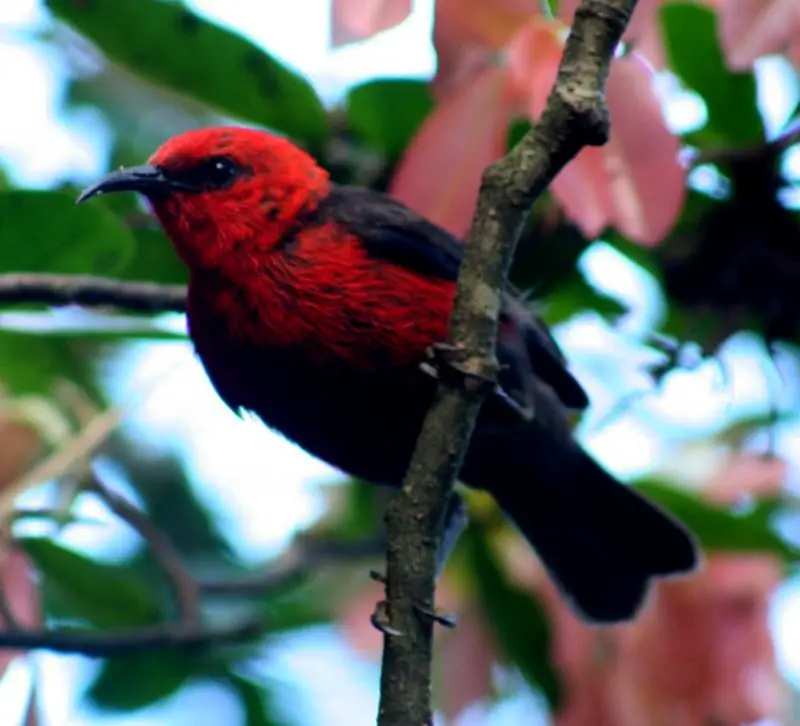
The Micronesian myzomela is a species of bird in the honeyeater family Meliphagidae, which is composed of seven insular subspecies distributed throughout the Northern Mariana Islands, including Rota, Tinian and Saipan.
This species forms part of a superspecies with other related island and mainland myzomelas across Pacific Ocean and Australia.
It has distinctive black plumage on its upperparts as well as bright yellow underparts that make it easily recognisable.
The bill shape varies slightly between subspecies but generally these birds have short curved bills adapted for nectar extraction from flowers.
These birds feed mainly on insects caught during sallies from an exposed perch or directly gleaned off foliage while also consuming nectar from flowering trees such as Hibiscus tiliaceus.Scientific classification:
| Kingdom | Animalia |
| Phylum | Chordata |
| Class | Aves |
| Order | Passeriformes |
| Family | Meliphagidae |
| Genus | Myzomela |
| Species | M. rubratra |
Also Featured In: Guam Birds You Need to See,
2. Micronesian Imperial Pigeon
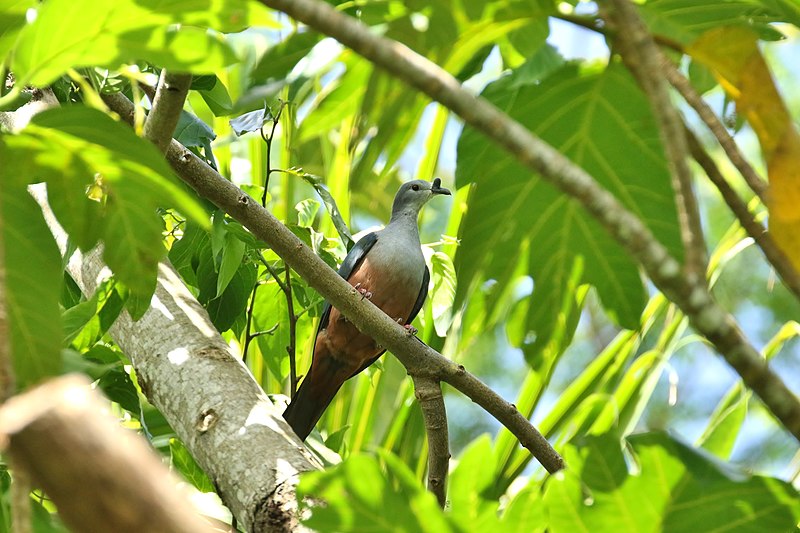
The Micronesian imperial pigeon is a bird species found in Palau, the Caroline Islands, the Marshall Islands and Nauru.
It has various habitats such as montane forests, secondary forests, beach-side forests and mangroves.
Unfortunately this beautiful creature is threatened by hunting and deforestation due to human activities. The IUCN have assessed it with “Near Threatened” status for its conservation priority levels.
This large sized bird can be seen flying around during dusk or dawn time periods in search of food like fruits from trees close by their habitat locations.
If we are able to protect its natural environment then this magnificent specie will continue living peacefully without any disturbances while appreciating nature’s beauty.Scientific classification:
| Kingdom | Animalia |
| Phylum | Chordata |
| Class | Aves |
| Order | Columbiformes |
| Family | Columbidae |
| Genus | Ducula |
| Species | D. oceanica |
Also Featured In: Common Republic of Nauru Birds,
3. Blue-Faced Parrotfinch
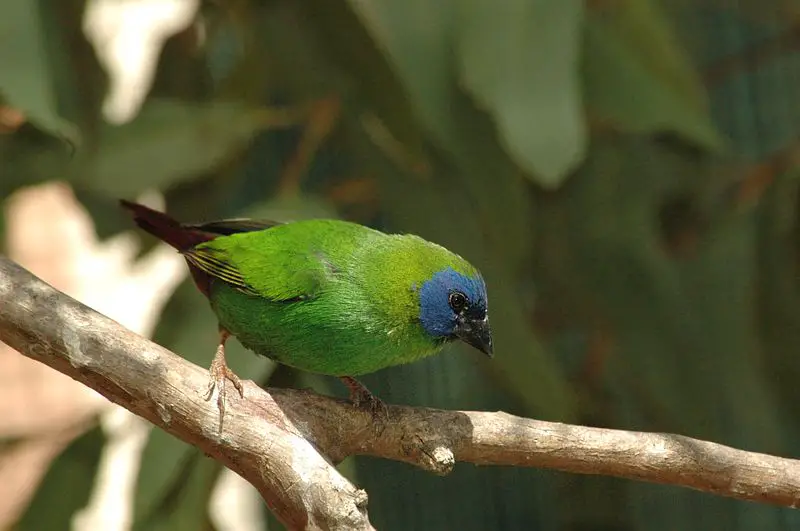
The Blue-faced Parrotfinch is a species of estrildid finch found all across the Pacific, from Australia to Japan and beyond.
It has an estimated global range of 10 million km2, inhabiting subtropical and tropical areas in both mountainous regions and lowland forests.
Its plumage is predominantly blue with white markings on its face as well as some yellow spots or stripes on its wings and tail.
The bird feeds mainly on insects but also eats seeds and fruits when available.
Breeding usually occurs during the rainy season; males construct nests lined with grasses while females lay up to five eggs at once which they incubate for two weeks until hatching takes place.
This species is considered locally common throughout most parts of their distribution area although no population estimates are currently available due to difficulties assessing them over large distances.Scientific classification:
| Kingdom | Animalia |
| Phylum | Chordata |
| Class | Aves |
| Order | Passeriformes |
| Family | Estrildidae |
| Genus | Erythrura |
| Species | E. trichroa |
4. Rufous Fantail
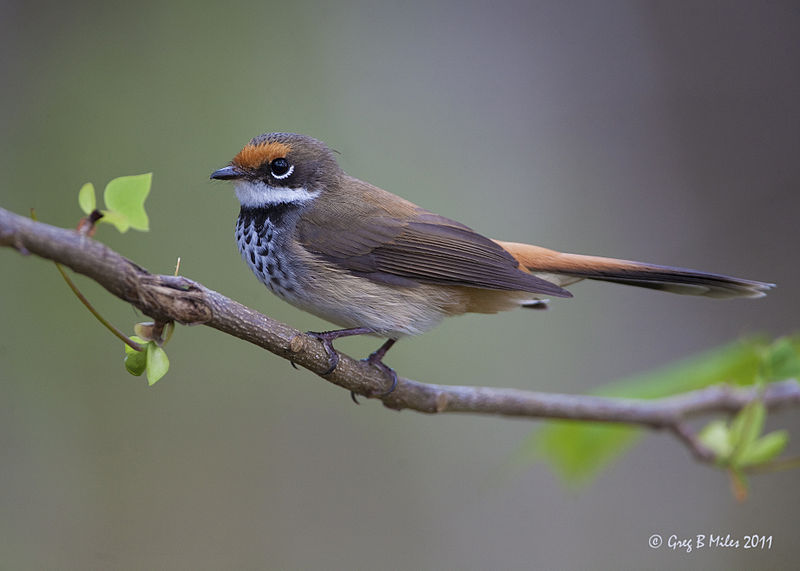
The Rufous Fantail is a small passerine bird found in Australia, Indonesia, Micronesia, New Guinea and the Solomon Islands.
It inhabits rainforests, wet forests, swamp woodlands and mangroves which makes it quite adaptable.
These birds are usually black-breasted with distinctive rufous wings and tail feathers that they use to fan out while looking for food on branches or shrubs.
They also often flick their tails from side to side as they search for insects like flies or moths.
The call of the Rufous Fantail consists of a series of high pitched notes that can be heard during its breeding season from September through February when mating pairs sing together near nesting sites such as tree hollows or rock crevices.
Despite their relatively small size these birds make an impressive presence thanks to their bold colors displayed in flight making them easy to spot even at great distances.Scientific classification:
| Kingdom | Animalia |
| Phylum | Chordata |
| Class | Aves |
| Order | Passeriformes |
| Family | Rhipiduridae |
| Genus | Rhipidura |
| Species | R. rufifrons |
5. Pohnpei Lorikeet
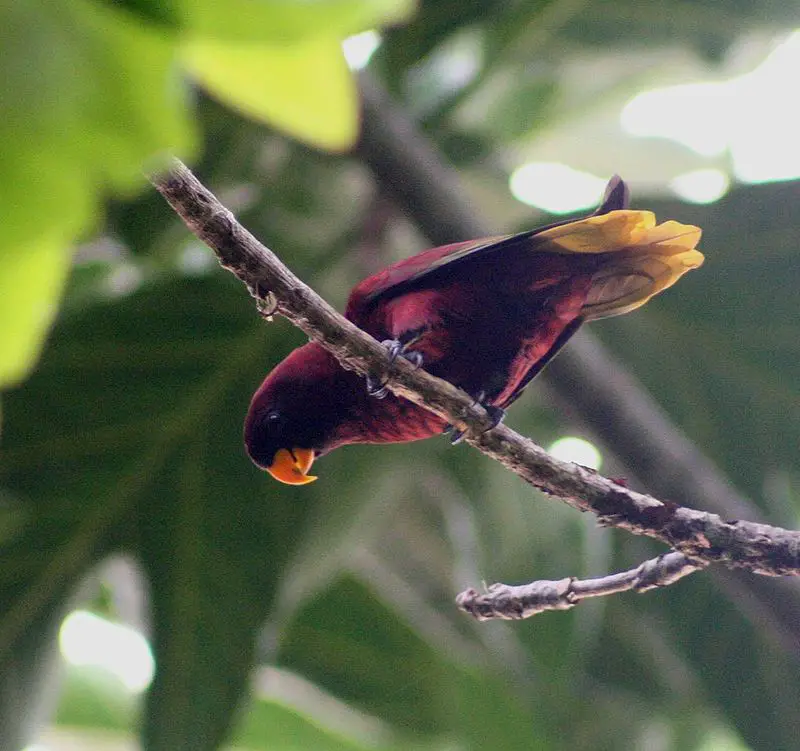
The Pohnpei lorikeet is a species of parrot native to the island of Pohnpei and nearby Ahnd Atoll in Micronesia.
It has been historically found on Namoluk Atoll, indicating that it may have had a wider distribution throughout the area at one point.
This bright and colourful bird features yellowish-green feathers with an orange forehead, blue wings, red tail tips and brown eyes.
Aside from its beauty they are also known for their loud calls which can be heard during the day or night depending on when they choose to socialize.
The diet consists mainly of nectar but also includes fruits such as papayas; insects are rarely consumed by this species.Scientific classification:
| Kingdom | Animalia |
| Phylum | Chordata |
| Class | Aves |
| Order | Psittaciformes |
| Family | Psittaculidae |
| Genus | Trichoglossus |
| Species | T. rubiginosus |
6. White-Fronted Ground Dove
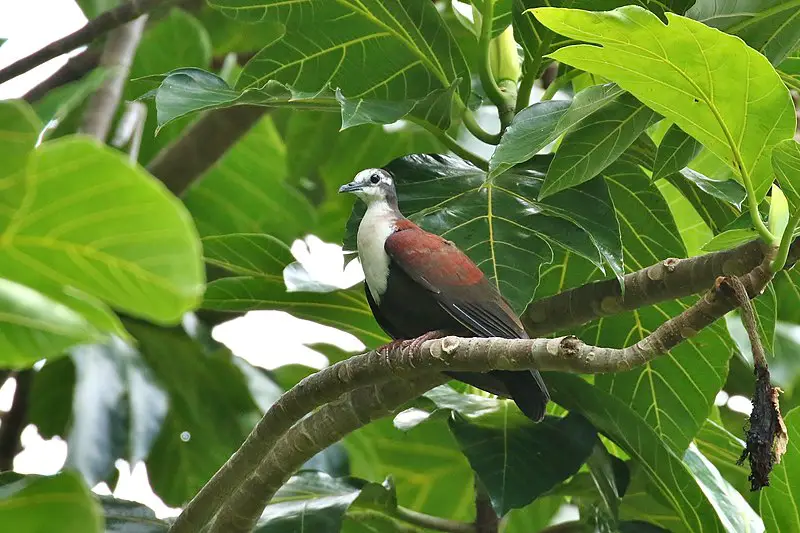
The White-fronted Ground Dove is an endemic species to Micronesia, found in lowland, montane and mangrove forests as well as shrublands and plantations.
It has a white forehead with black streaks on its neck and wings, along with greyish legs. Due to deforestation of it’s natural habitats, the dove faces threats such as habitat loss which puts this species at risk for extinction.
Conservation efforts need to be made in order preserve the fragile ecosystems these birds rely upon for survival.
Together we can help protect this bird by supporting reforestation initiatives or advocating against illegal logging operations that threaten their home range.Scientific classification:
| Kingdom | Animalia |
| Phylum | Chordata |
| Class | Aves |
| Order | Columbiformes |
| Family | Columbidae |
| Genus | Pampusana |
| Species | P. kubaryi |
7. White-Throated Ground Dove
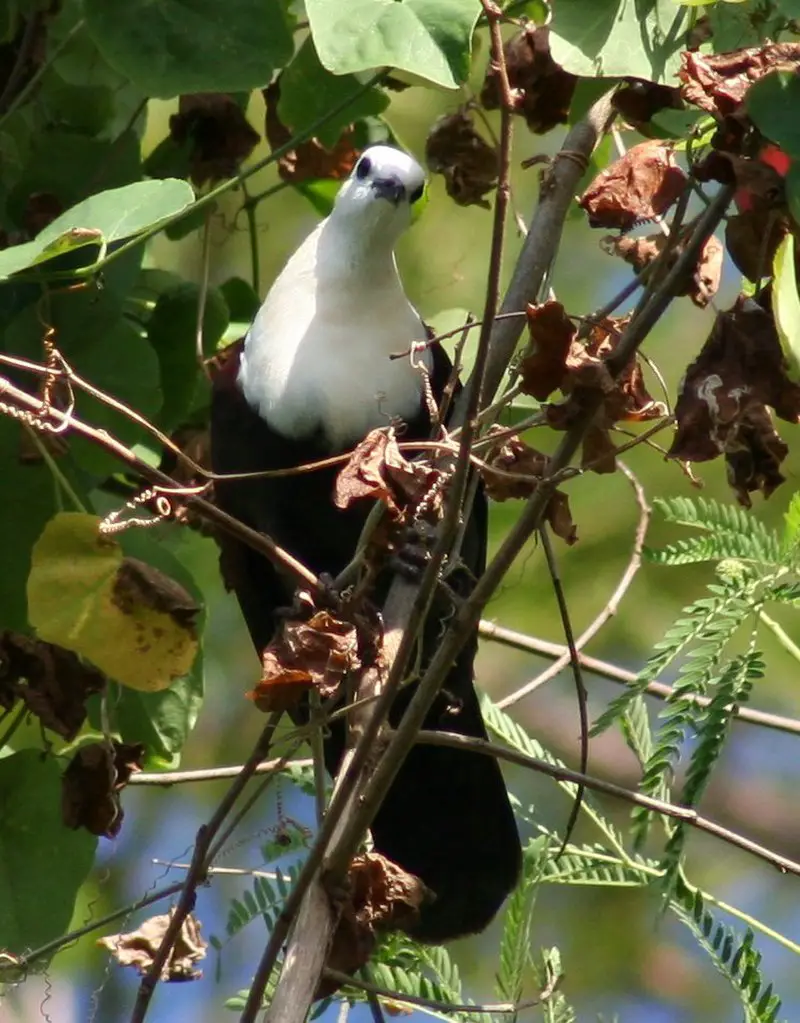
The White-throated Ground Dove is a species of ground dove in the genus Pampusana. It has an average length of 26 cm and a weight between 58.5 – 140 grams, making it one of the larger members of its family.
This bird was formerly classified under Alopecoenas Sharpe but was recently reclassified due to name priority reasons.
The White-throated Ground Dove is listed as Near Threatened on the IUCN Red List because its population numbers are declining due to deforestation, hunting and other human activities that destroy their natural habitats or disrupt their nesting grounds .
Conservation efforts should be taken soon so this beautiful species can continue living for generations to come.Scientific classification:
| Kingdom | Animalia |
| Phylum | Chordata |
| Class | Aves |
| Order | Columbiformes |
| Family | Columbidae |
| Genus | Pampusana |
| Species | P. xanthonura |
8. Micronesian Starling
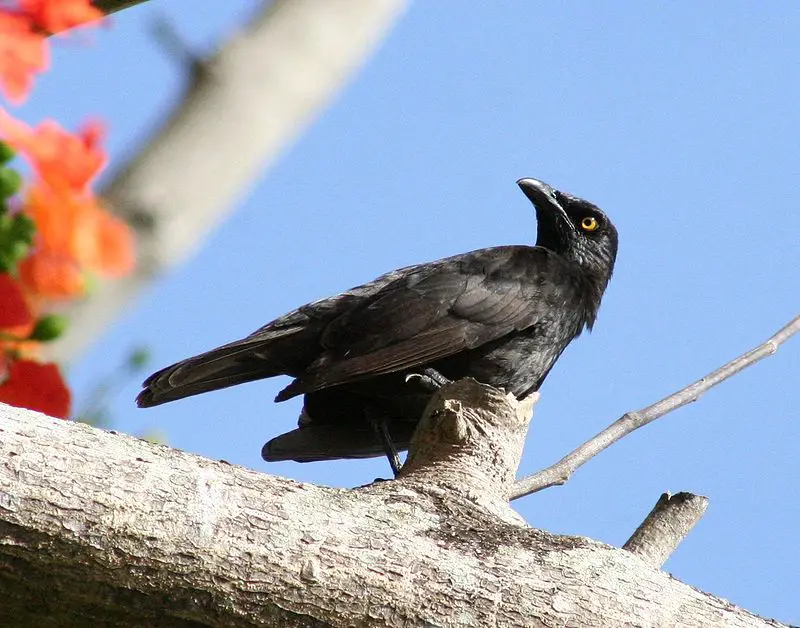
The Micronesian starling is a species of starling found in subtropical or tropical dry and moist forests across Micronesia, the Northern Mariana Islands, and Palau.
It has an impressive range for such a small bird. They are quite bold around humans as well. Diet-wise, they mainly consume fruit, seeds and occasionally insects; seabird eggs make up part of their diet too.
These birds are social creatures often seen congregating in large flocks near food sources like fruiting trees or bodies of water with plenty of aquatic invertebrates to feast on.
Their plumage consists mostly of shades grey although some may have faint hints blue/green iridescence depending on lighting conditions prevailing during the day.
Overall these beautiful little birds provide much joy when sighted in the wild.Scientific classification:
| Kingdom | Animalia |
| Phylum | Chordata |
| Class | Aves |
| Order | Passeriformes |
| Family | Sturnidae |
| Genus | Aplonis |
| Species | A. opaca |
9. Mariana Swiftlet
The Mariana Swiftlet is a small species of swiftlet that can be found natively in Guam and the Northern Mariana Islands. It has a dark grey-brown head, upperparts and tail with shallow forking.
Its throat and upper breast are colored grey-white while its underparts are darker shades of gray. The bird measures around 11 centimeters long and has an average wingspan between 24 to 27 centimeters wide.
They feed mainly on flying insects such as mosquitoes, moths, flies, dragonflies etc., which they capture midair or glean from vegetation or other surfaces.
During mating season they construct nests made out of saliva threads which they attach to cave walls or ceilings near their breeding grounds at nightfall before returning back to roost during daytime hours.Scientific classification:
| Kingdom | Animalia |
| Phylum | Chordata |
| Class | Aves |
| Order | Apodiformes |
| Family | Apodidae |
| Genus | Aerodramus |
| Species | A. bartschi |
10. Pohnpei Starling
The Pohnpei starling, also known as the Pohnpei mountain starling or Ponape mountain starling, is an extremely rare bird from the family of Starlings.
This species was endemic to the island of Pohnpei located in Federated States of Micronesia and it was referred to as “sie” by locals.
It was given its name after Austrian naturalist Johann Natterer who first discovered this species during his expedition in 1828.
The feathers were predominantly dark grey with white spots throughout while their bills could range from blackish-brown colouration to yellow depending on age and sex.
Sadly, due to excessive hunting and habitat destruction caused by humans this species has become extinct or critically endangered since 1982 when last sighting took place.Scientific classification:
| Kingdom | Animalia |
| Phylum | Chordata |
| Class | Aves |
| Order | Passeriformes |
| Family | Sturnidae |
| Genus | Aplonis |
| Species | A. pelzelni |
11. Teardrop White-Eye
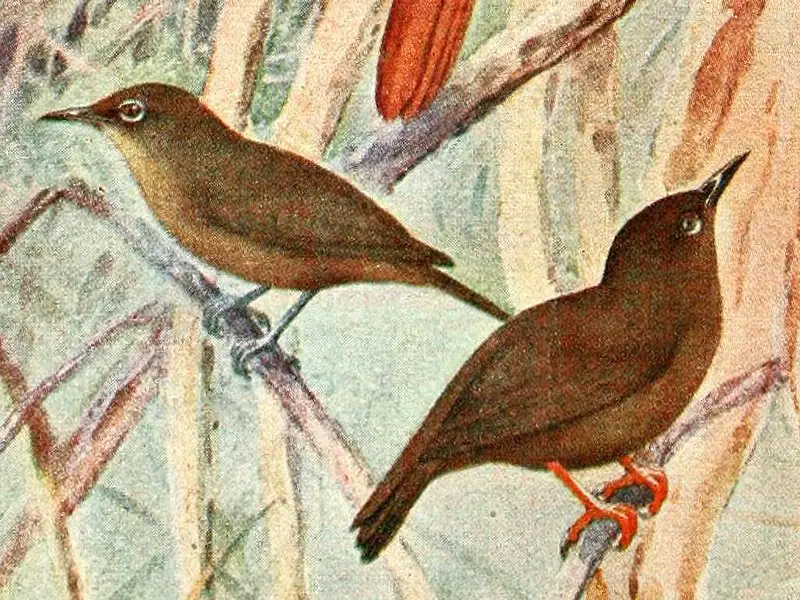
The Teardrop White-eye is a species of bird in the family Zosteropidae, found only on Mount Winipot on Tol Island within Micronesia’s Faichuk group. It may be the only true member of its genus Rukia, also known as “great white-eyes”.
This small bird has distinctive yellow and black plumage around its eyes along with a teardrop shaped marking under each eye.
Its habitat consists primarily of tropical forests at an elevation between 400 and 500 meters above sea level.
Due to deforestation from commercial logging operations, this species’ population size has decreased significantly since it was first discovered in 1972 by ornithologists.
As such, conservation efforts are being implemented to preserve this unique creature for future generationsScientific classification:
| Kingdom | Animalia |
| Phylum | Chordata |
| Class | Aves |
| Order | Passeriformes |
| Family | Zosteropidae |
| Genus | Rukia |
| Species | R. ruki |
12. Chuuk Monarch
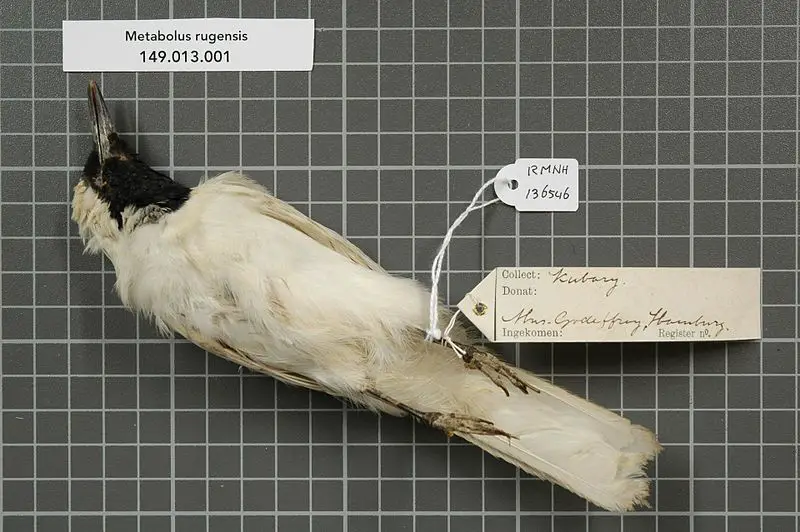
The Chuuk Monarch is an impressive species of bird, endemic to the island of Chuuk in Micronesia. It belongs to the family Monarchidae and its genus Metabolus.
The plumage of this bird is sexually dimorphic; males are predominantly black with white markings while females are more brownish-grey with a paler underside.
On average they measure around 20 cm long, making them larger than other members within their family such as Monarchs or Fantails.
They feed primarily on insects but also consume fruit when available.
This species has been classified by the IUCN Red List as Least Concern due to its stable population size and wide range on one single island for now it faces no major threats from human activities or habitat loss like many other birds do today.Scientific classification:
| Kingdom | Animalia |
| Phylum | Chordata |
| Class | Aves |
| Order | Passeriformes |
| Family | Monarchidae |
| Genus | Metabolus |
| Species | M. rugensis |
13. Kosrae Crake
The Kosrae crake, also known as Kusaie Island crake or Kittlitz’s rail is an extinct bird that once lived on the islands of Kosrae and Ponape in the south-western Pacific.
They were mainly seen around coastal swamps and marshlands covered with taro plants (Colocasia esculenta).
The species was discovered back in 1836 by German naturalist Heinrich von Kittlitz who first described it.
Unfortunately due to human activities such as urbanization, habitat destruction and hunting this unique bird became extinct.
It’s a sad reminder of what can happen when humans do not take proper steps to ensure the conservation of our wildlife populations.Scientific classification:
| Kingdom | Animalia |
| Phylum | Chordata |
| Class | Aves |
| Order | Gruiformes |
| Family | Rallidae |
| Genus | Zapornia |
| Species | †Z. monasa |
14. White-Browed Crake
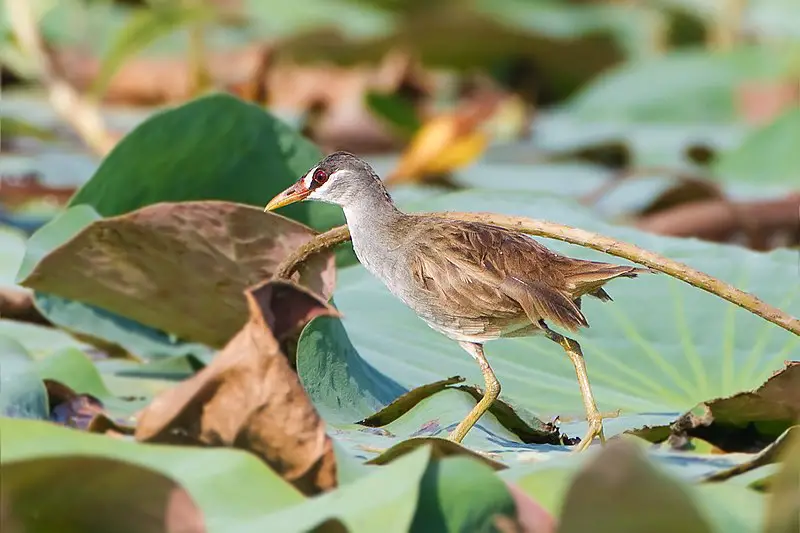
The White-browed Crake is an amazing bird found in many different parts of the world such as Australia, Brunei and even Japan.
It lives mostly in subtropical or tropical mangrove forests, where it can find plenty of food to survive on.
This species has a white head with brown eyes, combined with its slate grey back gives it a unique look that makes them stand out from other birds.
Its diet consists mainly of small invertebrates like insects and larvae but they also feed on fruits when available.
They are shy by nature so if you spot one be sure not to scare it away. Despite their rarity they have been known to breed successfully in captivity and thus have had some success at conservation efforts aimed at preserving this beautiful species.Scientific classification:
| Kingdom | Animalia |
| Phylum | Chordata |
| Class | Aves |
| Order | Gruiformes |
| Family | Rallidae |
| Genus | Poliolimnas Sharpe, 1893 |
| Species | P. cinereus |
15. Citrine White-Eye
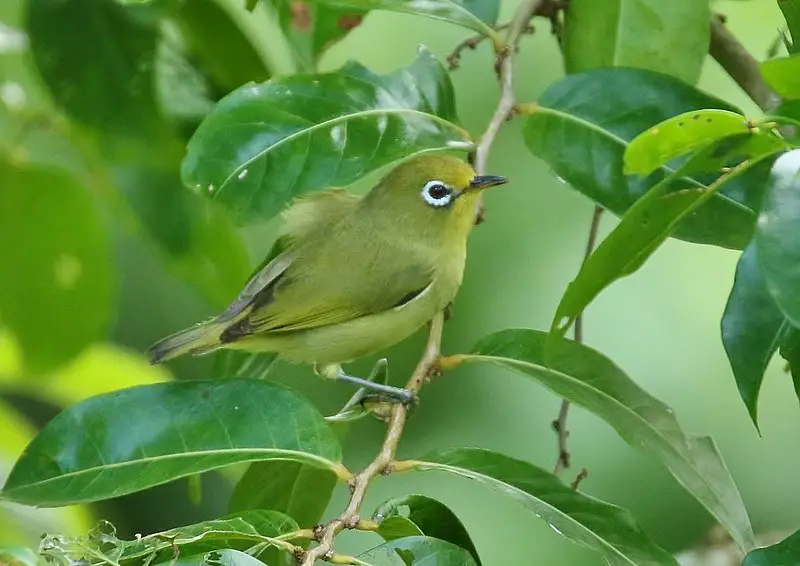
The Citrine white-eye, also known as the Caroline Islands White-eye, is a species of bird belonging to the Zosteropidae family. It inhabits Palau and Federated States of Micronesia in Oceania.
This small passerine bird has an olive green body with yellowish wings and tail feathers, along with a distinct yellow eye ring around its black eyes.
The male birds have whitish underparts while those of females are browner in coloration.
They forage for food among foliage or on tree trunks during daylight hours; their main diet consists of insects such as beetles and ants which they catch by gleaning from leaves or hovering midair before picking them off branches or other surfaces.
These active little birds can often be seen flitting about amongst trees in pairs or large groups.Scientific classification:
| Kingdom | Animalia |
| Phylum | Chordata |
| Class | Aves |
| Order | Passeriformes |
| Family | Zosteropidae |
| Genus | Zosterops |
| Species | Z. semperi |
16. Oceanic Flycatcher
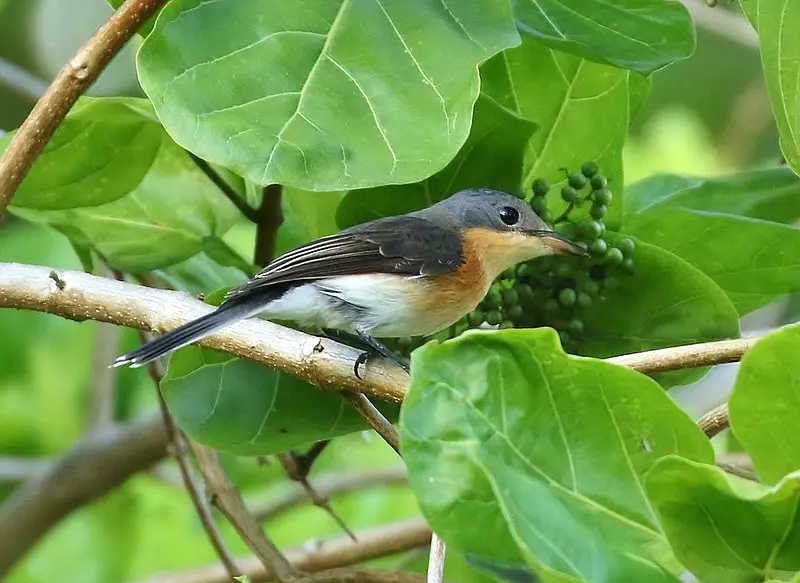
The Oceanic Flycatcher is a species of bird belonging to the Monarchidae family that is endemic to Micronesia, mainly found on the Caroline Islands.
It has evolved through three waves of colonization in non-overlapping times which have given it its diverse traits and adaptation for life in this region.
Some authorities consider them closely related with Palau flycatchers, due to their similar overall appearance; however they are considered distinct subspecies because of minor differences such as size, colouration and vocalizations.
They typically measure around 18cm long and can be identified by their greyish head cap and yellow bill.
The wings are dark brown while tail feathers tend to show olive tones when seen from below or black when viewed from above.
These birds feed primarily on insects like beetles along with fruit during breeding season which occurs between May – September although there may also be some year round activity depending upon local conditionsScientific classification:
| Kingdom | Animalia |
| Phylum | Chordata |
| Class | Aves |
| Order | Passeriformes |
| Family | Monarchidae |
| Genus | Myiagra |
| Species | M. oceanica |
17. Pohnpei Flycatcher
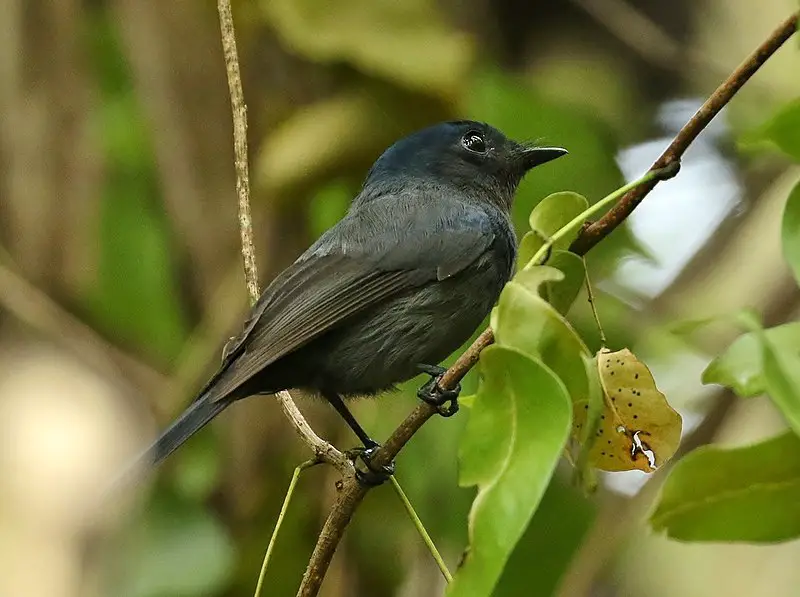
The Pohnpei flycatcher, also known as Koikoi in Pohnpeian and other names such as the Ponape broadbill or oceanic flycatcher, is a unique bird found only on Micronesia’s Caroline Islands.
It belongs to the Monarchidae family of birds and has vibrant grey-brown plumage with black eyes. Its wingspan can reach up to 7 inches long while its length is around 4 inches.
The diet consists mostly of insects which it captures mid-flight by hovering then diving after them like a small falcon.
As an endemic species they are currently listed as ‘vulnerable’ due to their limited range and population numbers within this region being at risk from development activities that impact upon local habitat destruction.Scientific classification:
| Kingdom | Animalia |
| Phylum | Chordata |
| Class | Aves |
| Order | Passeriformes |
| Family | Monarchidae |
| Genus | Myiagra |
| Species | M. pluto |
18. Kosrae Starling
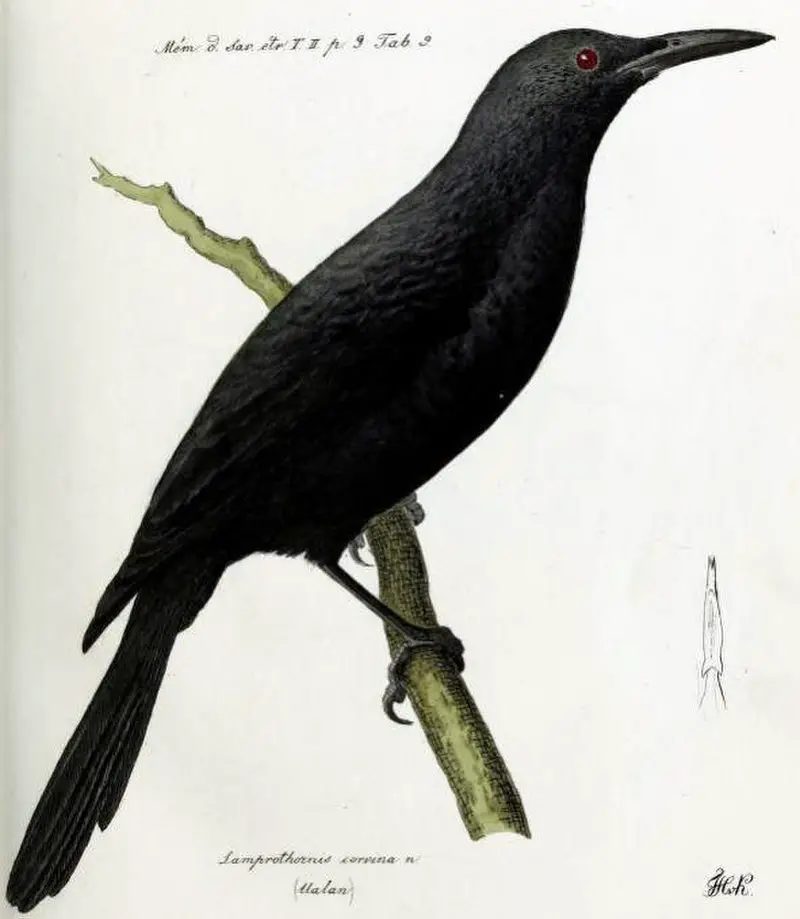
The Kosrae starling was a glossy black bird that belonged to the family of starlings (Sturnidae). It had an average length between 20 and 25.4 centimetres, making it similar in size to a crow.
The species was endemic on the island of Kosrae which is part of the Caroline Islands located in the south-western Pacific Ocean.
Sadly, this species has now become extinct due to human activities such as deforestation and hunting for food by local people living there.
Despite its extinction, some specimens have been preserved at museums around the world so future generations can still appreciate their beauty even if they cannot be seen alive again today without conservation efforts being made soon.Scientific classification:
| Kingdom | Animalia |
| Phylum | Chordata |
| Class | Aves |
| Order | Passeriformes |
| Family | Sturnidae |
| Genus | Aplonis |
| Species | †A. corvina |
19. Pohnpei Fantail
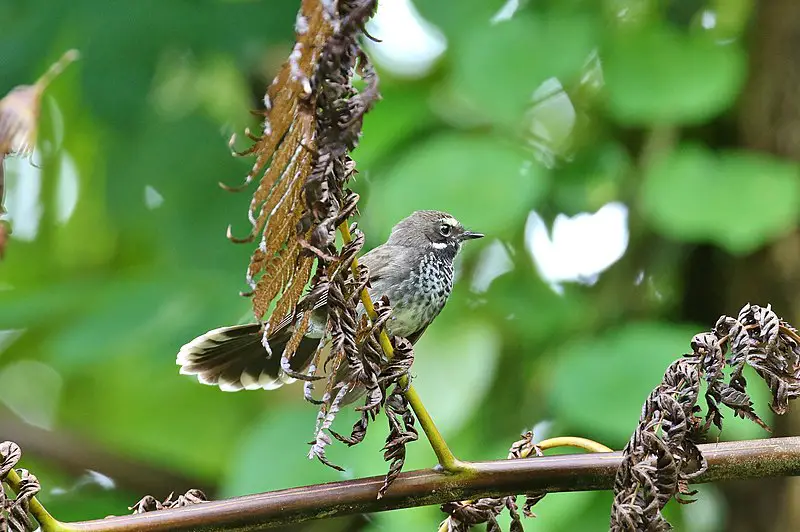
The Pohnpei fantail is a small bird, measuring around 15 cm in length and with its signature long, fan-shaped tail. It’s endemic to the Pacific island of Pohnpei in the Federated States of Micronesia.
This species can be found living among forests and at forest edges, where it feeds on insects which are gathered through gleaning from foliage or by making short dashes while flying overhead.
Due to its unique appearance and vibrant colours, this bird has become an iconic symbol for Pohnpeian culture, known locally as Likepsir.
Its conservation status is currently listed as Least Concern due to its wide range across the island nation; however ongoing monitoring will still be required into the future if we want these beautiful birds stay safe.Scientific classification:
| Kingdom | Animalia |
| Phylum | Chordata |
| Class | Aves |
| Order | Passeriformes |
| Family | Rhipiduridae |
| Genus | Rhipidura |
| Species | R. kubaryi |
20. Yap Monarch
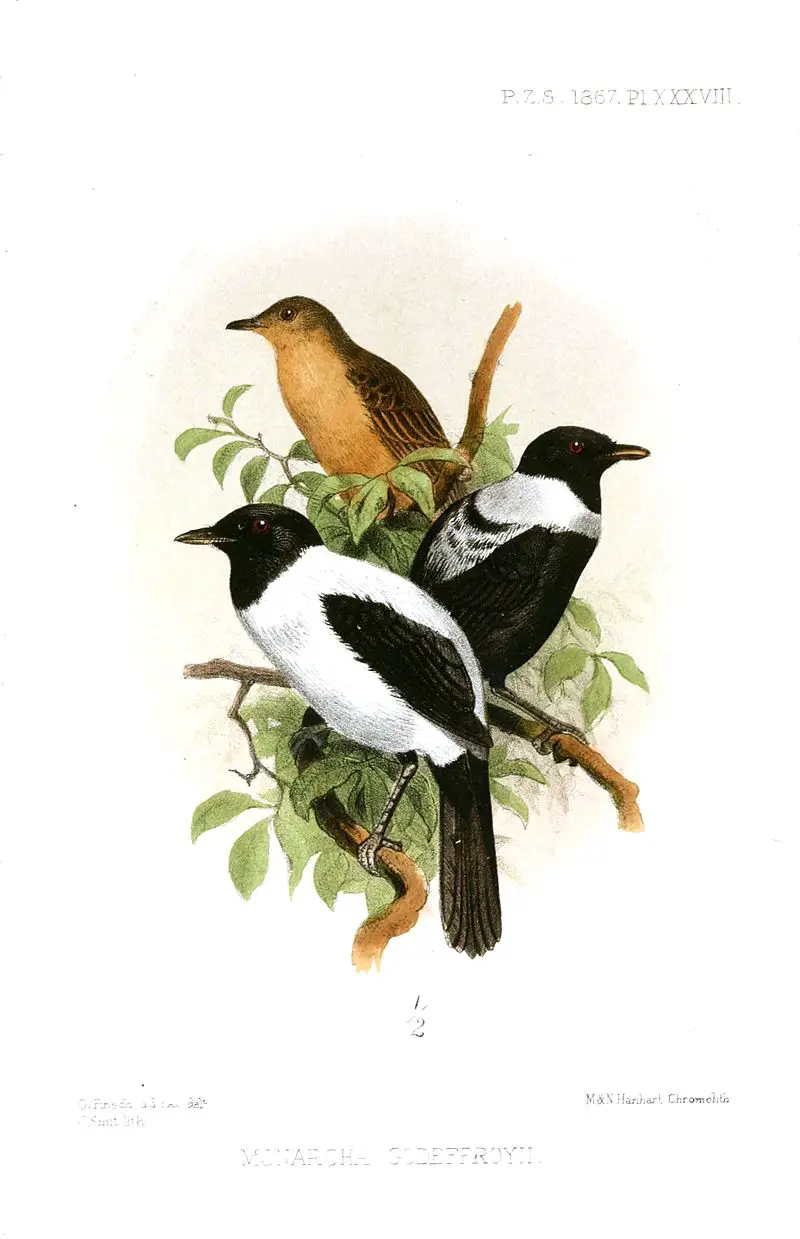
The Yap monarch is a species of bird found only in the Yap Main Islands, Micronesia. It belongs to the family Monarchidae and some authorities classify it under Metabolus genus.
This beautiful bird has striking black upperparts with white edges on its tail feathers, along with pale greyish-white undersides and throat.
Its habitat includes subtropical or tropical moist lowland forests as well as mangrove forests which provide them enough food for their sustenance like small insects, fruits and nectar from flowers.
The locals call this majestic creature “Gigiy”. They are usually spotted alone or in pairs during breeding season near wooded areas but sometimes can be seen gathering around shallow pools searching for food items that have fallen into water by accident.Scientific classification:
| Kingdom | Animalia |
| Phylum | Chordata |
| Class | Aves |
| Order | Passeriformes |
| Family | Monarchidae |
| Genus | Monarcha |
| Species | M. godeffroyi |
21. Plain White-Eye
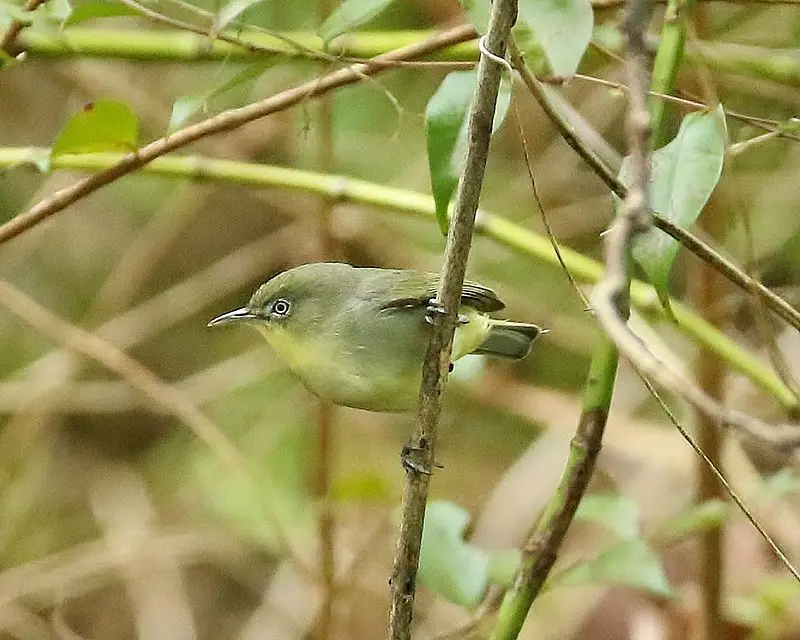
The Plain white-eye is a small species of bird that can be found in the family Zosteropidae. It is endemic to Yap, and lives mainly in subtropical or tropical moist lowland forests.
This beautiful birds has bright yellow underparts with white upper parts featuring two distinctive black stripes on its face which set it apart from other similar species.
The males have an iridescent blue patch on their heads while females lack this feature but have a duller greyish coloration instead.
Despite being so small, they are quite vocal and produce melodious chirps as well as rattles during mating season.
They feed mainly on insects such as beetles, caterpillars and moths while also consuming some fruit occasionally too. If you ever get a chance to visit Yap then keep your eyes peeled for these lovely little creatures.Scientific classification:
| Kingdom | Animalia |
| Phylum | Chordata |
| Class | Aves |
| Order | Passeriformes |
| Family | Zosteropidae |
| Genus | Zosterops |
| Species | Z. hypolais |
22. Long-Billed White-Eye
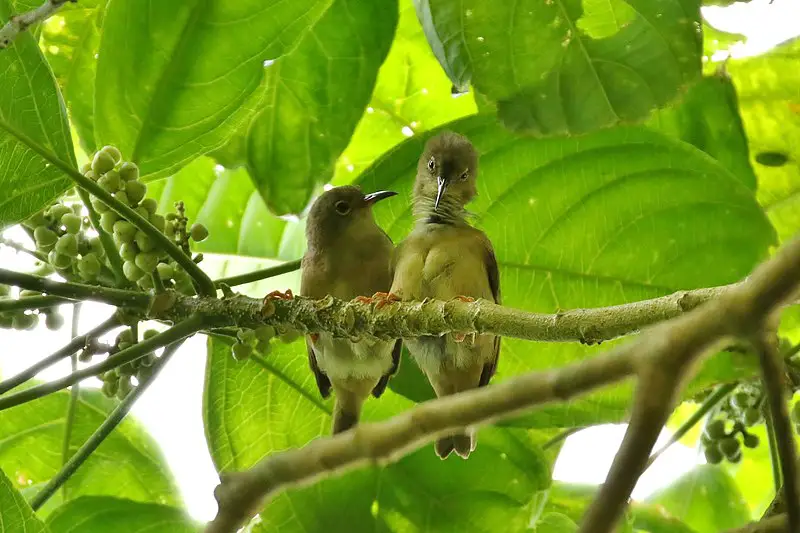
The Long-billed White-eye is a species of bird found only on the island of Pohnpei in the Federated States of Micronesia. It inhabits subtropical or tropical moist lowland forests and plantations, but its population is threatened by habitat loss.
This small passerine has a curious behavior similar to that of nuthatches; it creeps along large tree limbs searching for food.
Its plumage consists mainly of olive green above with white underparts and yellow legs. The most identifiable feature, however, is its long bill which helps it reach deep into crevices while foraging.
In addition to this remarkable adaptation, they also have excellent eyesight which allows them to spot prey from great distances away.
Despite their decreasing numbers due to human activities such as deforestation and agricultural expansion, we can still help these birds thrive through conservation efforts like protecting their habitats and limiting development around nesting sites so future generations can enjoy seeing this unique species in the wildScientific classification:
| Kingdom | Animalia |
| Phylum | Chordata |
| Class | Aves |
| Order | Passeriformes |
| Family | Zosteropidae |
| Genus | Rukia |
| Species | R. longirostra |
23. Grey-Brown White-Eye
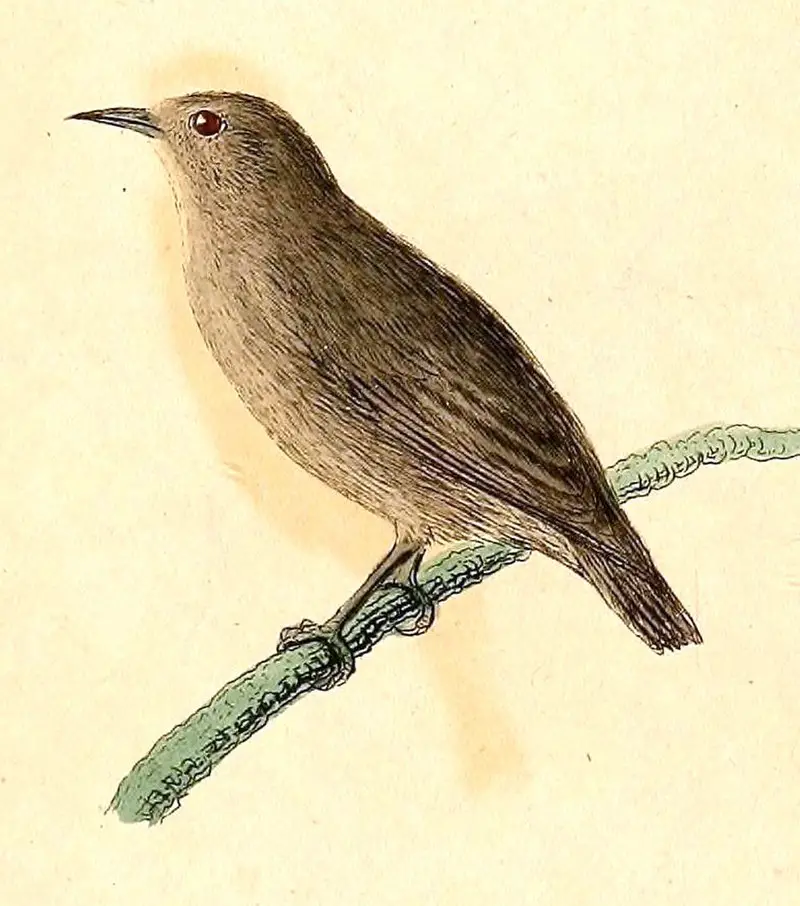
The Grey-brown white-eye is a small bird, endemic to the island of Pohnpei in Micronesia. It has greyish brown plumage and bright yellow eyes which give it its name.
This species was once thought to be the same as the Kosrae White-eye but studies have shown them to be different birds.
The Grey-Brown White Eye inhabits tropical lowland forests and usually forages in pairs or small groups among foliage or branches for insects, nectar and other food sources.
Sadly this species is threatened due habitat loss caused by deforestation so conservation efforts are needed if we want these beautiful little birds around into future generations.Scientific classification:
| Kingdom | Animalia |
| Phylum | Chordata |
| Class | Aves |
| Order | Passeriformes |
| Family | Zosteropidae |
| Genus | Zosterops |
| Species | Z. ponapensis |
24. Micronesian Megapode
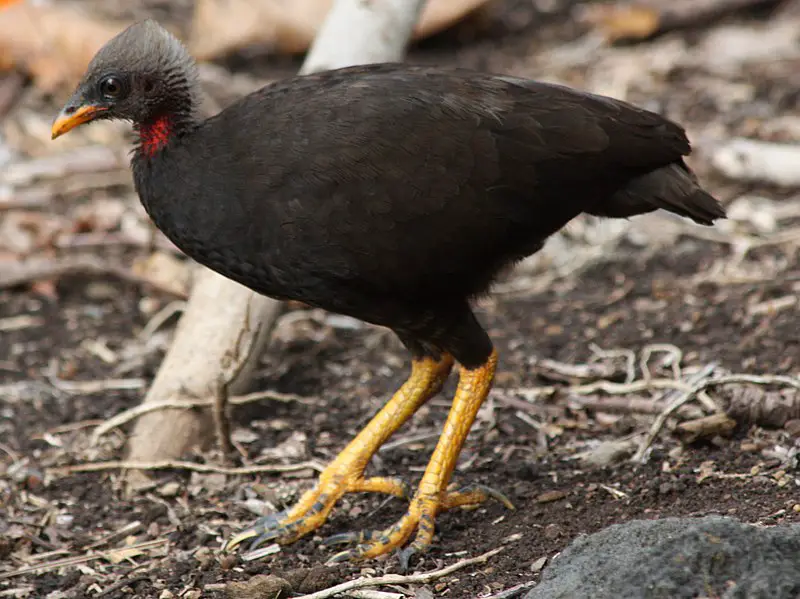
The Micronesian Megapode is an endangered bird species inhabiting the islands of the Western Pacific Ocean. It has a stocky body, mostly dark brown-black in colour with its head being paler than its body.
The crest is grey, bill yellow and legs and feet dull-yellow. Its length from beak to tail tip measures 38cm making it medium sized for a megapode bird.
Their diet consists mainly of fruits, nuts and invertebrates found on the forest floor which they locate by their well developed sense of smell as opposed to sight or hearing like other birds do.
To breed they make mounds out of soil where females lay around twenty eggs at once that are then incubated by the heat generated from decomposing organic matter within them.Scientific classification:
| Kingdom | Animalia |
| Phylum | Chordata |
| Class | Aves |
| Order | Galliformes |
| Family | Megapodiidae |
| Genus | Megapodius |
| Species | M. laperouse |